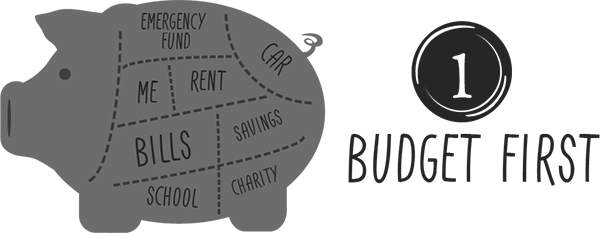Picture this, Cecily 1965... Seriously speaking though, picture yourself on a boat with just enough food, water, and a few other things to get you by for a two-week journey. You are sailing along in the middle of the ocean, when suddenly, your boat collides with something hard and sharp, causing major damage to your vessel. What do you do in this type of situation? Are you prepared? If all else fails, do you at least have a life vest?
Life rarely, if ever, goes as planned. Sometimes, you get sent happy surprises, and other times, you're left feeling like a sinking ship. Life is full of the unknown and, financially speaking, that's why it is good to have an emergency fund. Wouldn't it be great to know exactly when the battery in your car will die or when your refrigerator will bite the dust? If I was a betting person, I would wager that if most people had that knowledge in their hands, they would be fully prepared financially to replace or repair these items. Since that is something most people don't have the power to do, however, it is smart practice to set money aside for such events. It can be a little daunting, though, preparing for the unknown, because you don't know exactly what you're preparing for. Where do you start? Below, are five ways to help you start and grow an emergency fund:

1. Budget First: If you aren't doing it already, it's smart practice to plan a regular monthly budget for yourself. Calculate the money you take in versus the money that goes to bills and other necessary expenses. Weed out frivolous spending, but don't take it out entirely. It's okay to treat yourself. You work hard for your money and you deserve to spend it on something you want. But, don't treat yourself to the point where it is hurting you more than it is helping you. Once you've calculated your monthly budget, it will be easier for you to decide how much money you can put aside for your emergency fund. It is a good general rule of thumb to save enough to cover 4-7 months' worth of expenses.

2. Decide Where to Keep Your Emergency Fund: Your emergency fund should be something easy for you to access during an emergency. However, it shouldn't be so easily accessible that you're tempted to withdraw it for everyday expenses and impulse buys. Create a separate savings or checking account for your emergency fund. With the money in a savings account or some checking account types*, it can draw a bit of interest while waiting for one of those rainy day emergencies.
* For a list of interest-earning checking accounts here at Members First Credit Union of Florida, visit our website at: www.membersfirstfl.org.

3. It's A Bill: If we're being technical, an emergency fund is not a bill; but, it's a good idea to think of it as one. You know you have to pay your cellphone bill or credit card bill the same time every month. So, why not put aside a set amount each month for your emergency fund? With automatic monthly transfers, it's easy to ensure that money goes to your rainy day fund.

4. Baby Steps: I'm trying incredibly hard not to use the trite saying, "Rome wasn't..." Wasn't what? It wasn't built in a day. As trite as the saying is, it's true. Nothing worth having comes to you in a flash. Unless you happen to be sitting pretty on a million dollars, you can't build an emergency fund in one instant. Take baby steps by setting a monthly or weekly goal for yourself. If you put $10 a week into your emergency fund, in a year, you'll have $500. If you get paid every two weeks and put $20 into your emergency fund each paycheck, within a year, you would have roughly $520. If you happen to run across some unexpected cash, like birthday gifts or more money on your tax refund than you were expecting, set it aside in your emergency fund. Save change in a jar and put it in your emergency fund once a month. You'll be surprised how much small change can add up. Start small, but try to increase what you put into your rainy day account whenever possible.

5. Use Your Emergency Fund Only For Emergencies: An emergency fund is just that, money set aside for emergency situations. This, however, does not include hair or fashion emergencies, no matter how badly you may think you need the makeover. That pair of $60 jeans could mean the difference between riding the bus to work (albeit, riding the bus to work in style) and getting your car fixed so you can avoid the hassles of public transportation. Only use your emergency fund for expenses that you can't foresee, like an illness, getting laid off a job, unexpected car trouble, a broken appliance, and the list goes on. Don't, however, use it for impulse buys or one-time expenses each year. One way to avoid doing this is by making it somewhat difficult to access the funds in your emergency account. If you decide to have your emergency fund in a checking account, make a decision to not get a debit card or checkbook for that particular account. If you do happen to need the funds in an emergency, it's easy to call or transfer the needed funds via phone and internet banking.
The most important thing is to be your own enforcer. Knowing your budget and living within, and not above it, is crucial to living both a balanced financial life and saving for emergency expenses. Who better than you knows your financial habits and shortcomings? You're going along day by day, when suddenly life smacks you in the face. Are you ready? Do you have a financial life vest?
« Return to "BluePrint"

